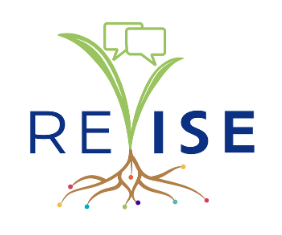March 30th, 2018 | EVALUATION
The Science Behind Pixar (SBP) exhibition was the product of a collaborative effort among the Museum of Science, Boston (MOS), Pixar Animation Studios, and the Science Museum Exhibit Collaborative (SMEC). The 13,000 square foot exhibition presented the science, math, and computer science behind Pixar Animation Studios’ animated films and innovation. Before entering SBP, visitors watched a five-minute film that oriented them to the exhibition and discussed its main messages. Visitors then interacted with screen-based and physical interactive exhibits, as well as the technical pipeline of the overall process, to increase their knowledge, skills, and interest in science, math, and computer science concepts and practices. Videos of Pixar Animation Studio employees detailed the range of technical jobs at Pixar Animation Studios, and their contributions to the technological advances that have revolutionized computer animation techniques.
Data collection entailed a series of instruments and methods: tracking and timing observations, post-exhibition interviews, pre-exhibition surveys, post-exhibition and follow-up surveys, educator workshop surveys, and Visitor Experience Monitoring surveys (VXM). At MOS, combinations of these data methods were used with: general public audiences, audiences with a range abilities, school field trip groups, and teachers attending educator workshops. Data from general public audiences were also collected at The Franklin Institute (FI).
The SBP summative evaluation provides insight into the impacts of the exhibition on its public visitors and school audiences. SBP was successful in attracting the target age group of age eight and older, conveying intended learning goals, and supporting a broad range of visitor interactions. Evaluators also studied SBP at the Franklin Institute in Philadelphia, where the findings yielded few significant differences. This is encouraging evidence that SBP will function similarly at exhibition host sites outside the Greater Boston Area. New strategies for accessibility pertaining to audio labels and touchscreen interface design could inform future exhibit design at MOS and other museums. Partnerships, such as the one with Pixar Animation Studios, supported the Museum to look outside its own institutional knowledge and leverage the expertise of others. As a result, working together helps to produce exciting and innovative exhibitions.
Document
2018-02-SBP-Summative-Eval-Report-Final.pdf
Team Members
Clara Cahill, Author, Museum of Science, BostonLeigh Ann Mesiti, Author, Museum of Science, Boston
Sunewan Paneto, Author, Museum of Science, Boston
Sarah Pfeifle, Author, Museum of Science, Boston
Katie Todd, Author, Museum of Science, Boston
Megan Gregory, Editor, Museum of Science, Boston
Tags
Audience: Elementary School Children (6-10) | General Public | Middle School Children (11-13) | Museum | ISE Professionals | Youth | Teen (up to 17)
Discipline: Art | music | theater | Computing and information science | Technology
Resource Type: Evaluation Reports | Summative
Environment Type: Films and IMAX | Media and Technology | Museum and Science Center Exhibits
